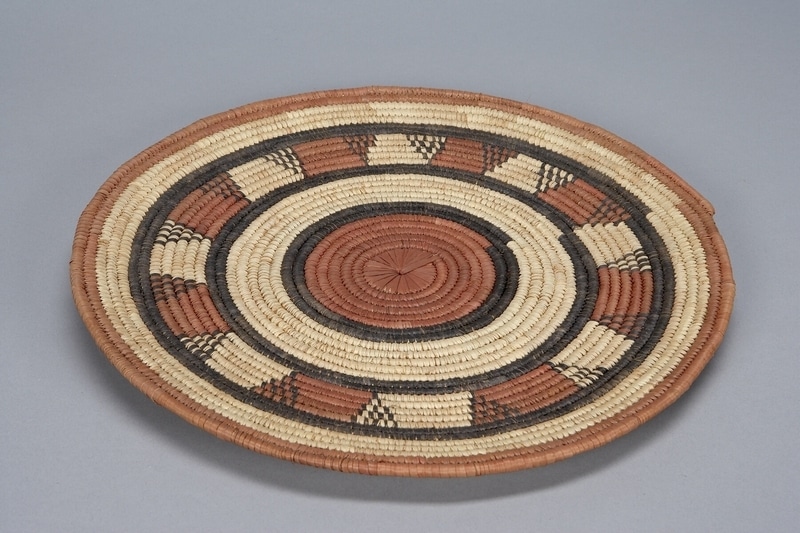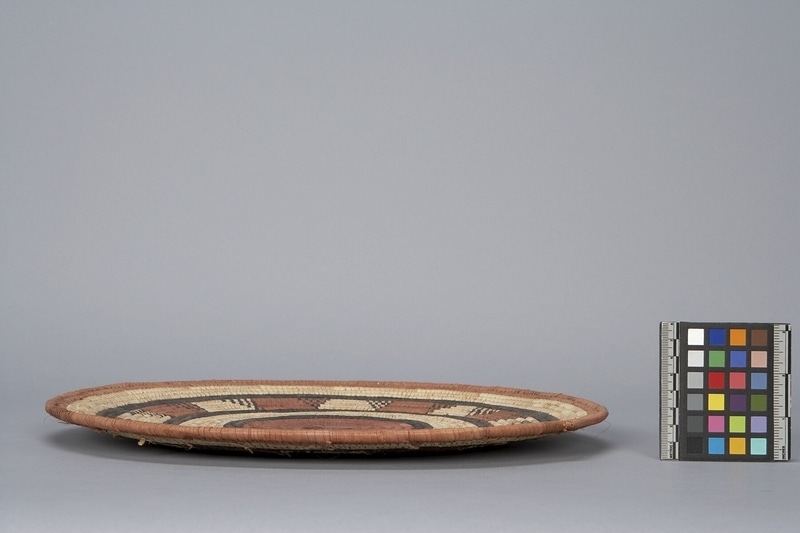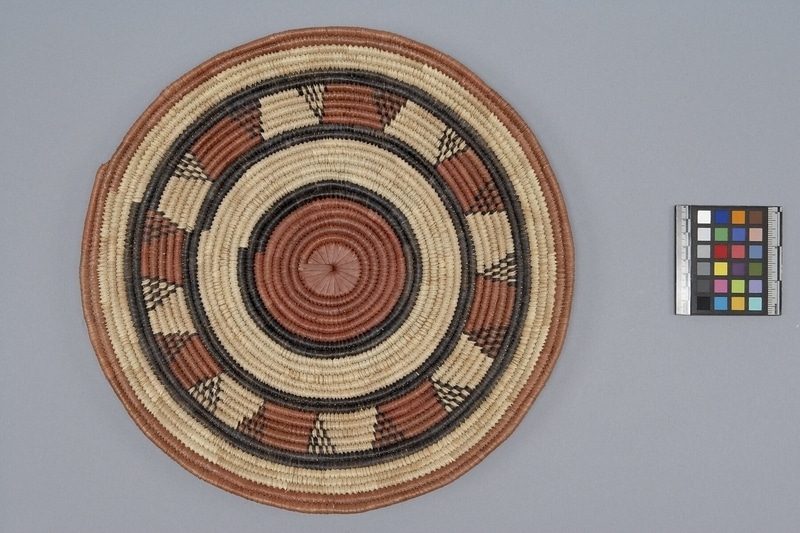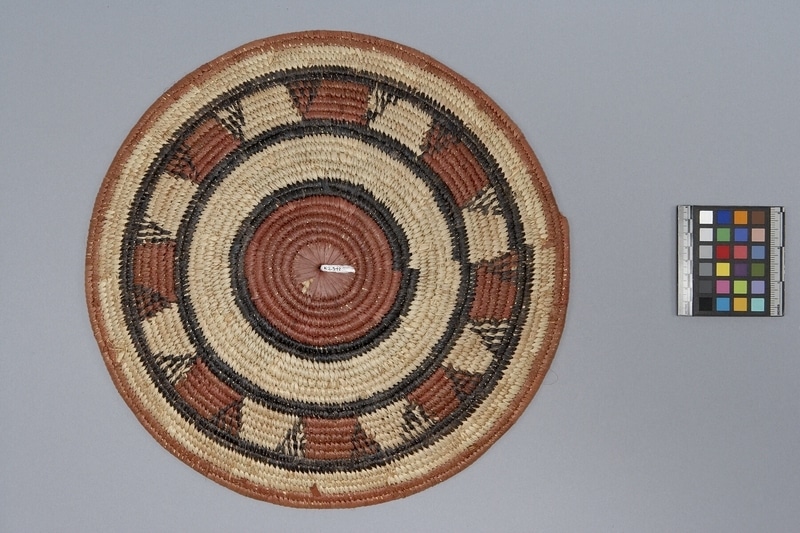Plate Item Number: K2.341 from the MOA: University of British Columbia




Description
Woven, palm leaf, coiled, plate consisting of traditional abstract designs in ochre, natural, and black. The centre is red with band of natural followed by a thin stripe of black. Next is a band with small alternating sections of natural and red detailed with black triangles. This decorative band is bordered by a thin stripe of black. The edge is bordered with an inner band of natural and an outer band of red.
History Of Use
Used as a plate for flat bread, the staple food of nomadic Fulani. Weaving is traditionally done by women, and the knowledge is passed down from mother to daughter. For the Fulani, grass weaving is vital because the items they create can be used for shelter, indicate prosperity, aid chores, and be sold at market to generate income. Fulani plates are kept on the one table in the household and used most days to serve breakfast, dinner or serve other items. Some say the fullness of the table (full with pots, plates etc.) represents the mother's prosperity and fertility; a full table then represents a fortunate woman. When a daughter marries the mother will give her items from her table. This is symbolic of passing on her prosperity into the new marriage and simultaneously symbolizing the mother’s decline in prosperity.
Specific Techniques
Grass weaving involves taking several thin leaves of the same length and using one of them to bind the outside of the other leaves. This creates a strand which can then be bent around other bound leaves in order to interlock and create a structured weave. This method does not require a loom or tools.
Item History
- Made in Burkina Faso ?
- Collected by Deborah Taylor between 1971 and 1972
- Owned by Deborah Taylor before 1972
- Received from Leon & Thea Koerner Foundation (Funding source) and Deborah Taylor (Seller) during 1972
What
Who
- Culture
- Fulani
- Field Collector
- Deborah Taylor
- Previous Owner
- Deborah Taylor
- Received from
- Leon & Thea Koerner Foundation (Funding source) and Deborah Taylor (Seller)
Where
- Holding Institution
- MOA: University of British Columbia
- Made in
- Burkina Faso ?
When
- Collection Date
- between 1971 and 1972
- Ownership Date
- before 1972
- Acquisition Date
- during 1972
Other
- Item Classes
- basketry
- Condition
- good
- Accession Number
- 0200/0049